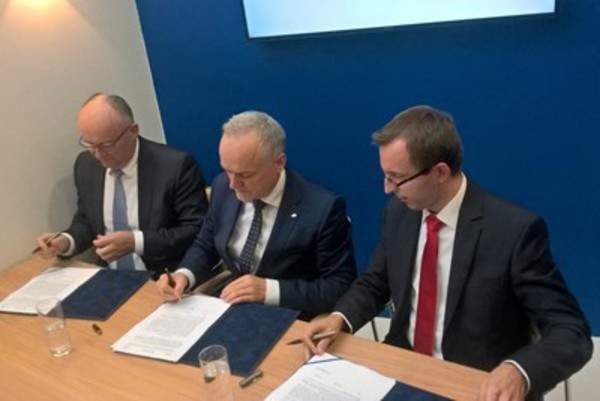
PKP Cargo, Pesa Bydgoszcz and Poland’s Institute of Rail Vehicles TABOR (IPS TABOR) have signed an agreement to develop an autonomous train.
The agreement was signed by PKP Cargo president Czesław Warsewicz, Pesa Bydgoszcz head Krzysztof Sędzikowski and IPS TABOR director Maciej Andrzejewski.
Under the deal, PKP Cargo co-develop a technical design based on the Pesa’s Gama locomotive platform, which will be verified by scientists from TABOR.
During the second stage that includes design and research works, Pesa will focus on building a dual-system, electricity, and diesel autonomous train. After testing by PKP Cargo, the locomotive is likely to be commissioned in 2022.
PKP Cargo president Czesław Warsewicz said that two-system locomotives are universal, as they allow performing both shunting and lining operations without changing the vehicle.
Czesław Warsewicz added: “New locomotives will be more efficient and will help to reduce costs, which is important under the circumstances of rising fuel and energy prices.”
How well do you really know your competitors?
Access the most comprehensive Company Profiles on the market, powered by GlobalData. Save hours of research. Gain competitive edge.

Thank you!
Your download email will arrive shortly
Not ready to buy yet? Download a free sample
We are confident about the unique quality of our Company Profiles. However, we want you to make the most beneficial decision for your business, so we offer a free sample that you can download by submitting the below form
By GlobalDataBased on the Gama family locomotive platform, the electric-diesel autonomous train project was positively evaluated. Its recommendation for funding under the Innotabor programme was announced by the National Center for Research and Development.
After completing all tests and obtaining the required permits, the autonomous locomotive will be commissioned in four years.
It will achieve the level of GoA3 automation, which means that the driver will not have to control the locomotive route as safety will be ensured by an autonomous steering system operated by artificial intelligence (AI).
The system will feature sensors, cameras, gyroscopes, and similar devices.
The driver will be available in the cabin to take control of the locomotive in the event of unusual scenarios.



